If you’ve ever seen your cat’s amniotic sac hanging out, you know that it can be a pretty alarming sight. At this point, many pet parents don’t know what to do.
In this blog post, we’ll discuss what to do when your cat’s amniotic sac is hanging out and what the possible implications might be.
If your cat’s amniotic sac is hanging out, it’s crucial to contact a veterinarian immediately as this could indicate a complicated birth or miscarriage, requiring urgent professional medical attention.
What is an Amniotic Sac In Cats?
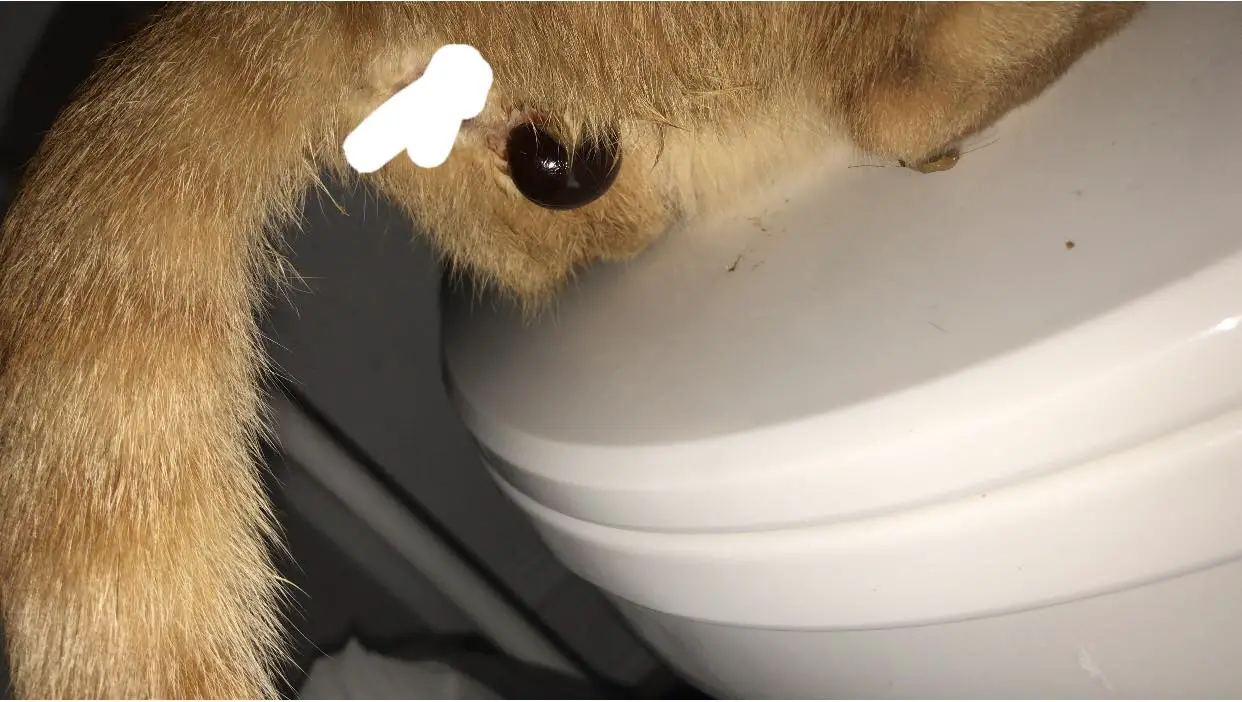
The amniotic sac in cats is a thin but strong transparent bag that holds the fetus during pregnancy and provides a protective environment for the developing kitten.
In feline pregnancies, each kitten is enclosed in its own amniotic sac within the mother’s uterus. The sac is filled with amniotic fluid, which cushions the kitten and helps regulate temperature.
It also allows the kitten to move around and develop muscles and bones. The amniotic sac, along with the placenta, provides the kitten with oxygen and nutrients from the mother’s bloodstream and removes waste products.
During birth, the amniotic sac usually ruptures on its own, often referred to as ‘water breaking’.
Sometimes, the kitten is born still inside the intact amniotic sac, and the mother cat will typically bite open the sac and clean the kitten immediately after birth.
What to Do When Your Cat’s Amniotic Sac Is Hanging Out
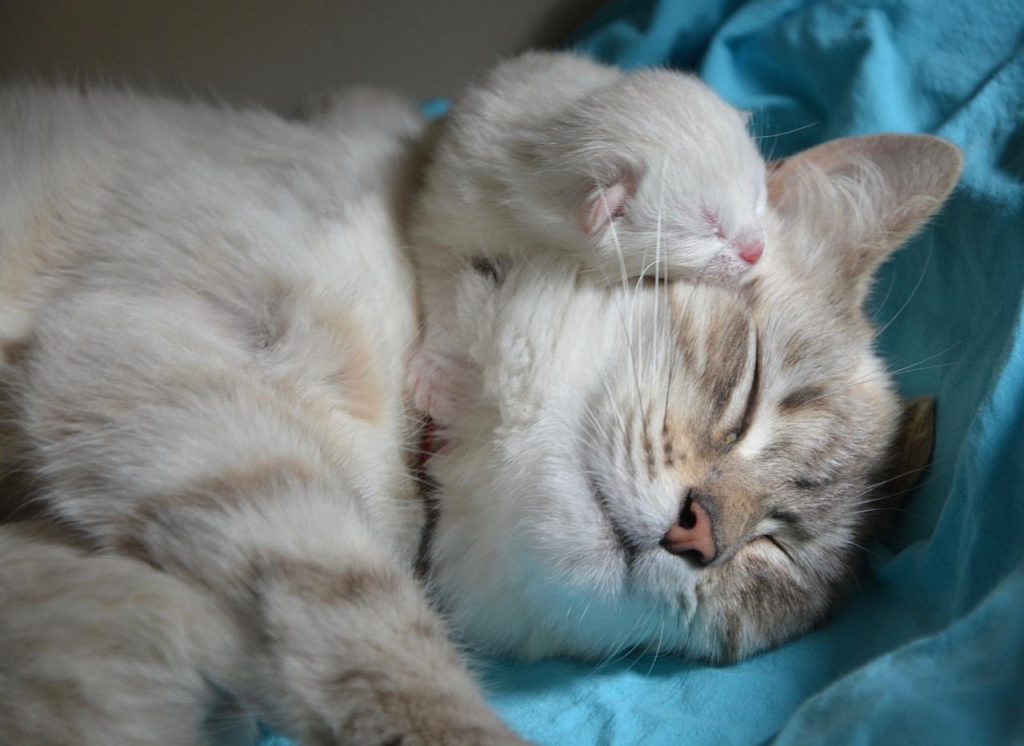
When a cat’s amniotic sac is hanging out during birth, it indicates that the birthing process is not proceeding as it should, and immediate veterinary assistance is necessary to ensure the health and safety of both the mother cat and her kittens.
In such situations, the cat may be in the middle of labor and experiencing difficulties.
The amniotic sac, which should normally break as the kitten is born, might be protruding without the kitten being delivered.
This could be due to several reasons such as the kitten being too large, positioned incorrectly, or other complications in the birth canal.
From my experience as a veterinarian, it’s crucial to act promptly. Delaying intervention can lead to stress and potential health risks for the mother cat and her unborn kittens.
Immediate veterinary attention can help assess the situation and take necessary actions, which may include assisting in the delivery or performing a cesarean section if required.
Understanding Cat Labor and Delivery Process
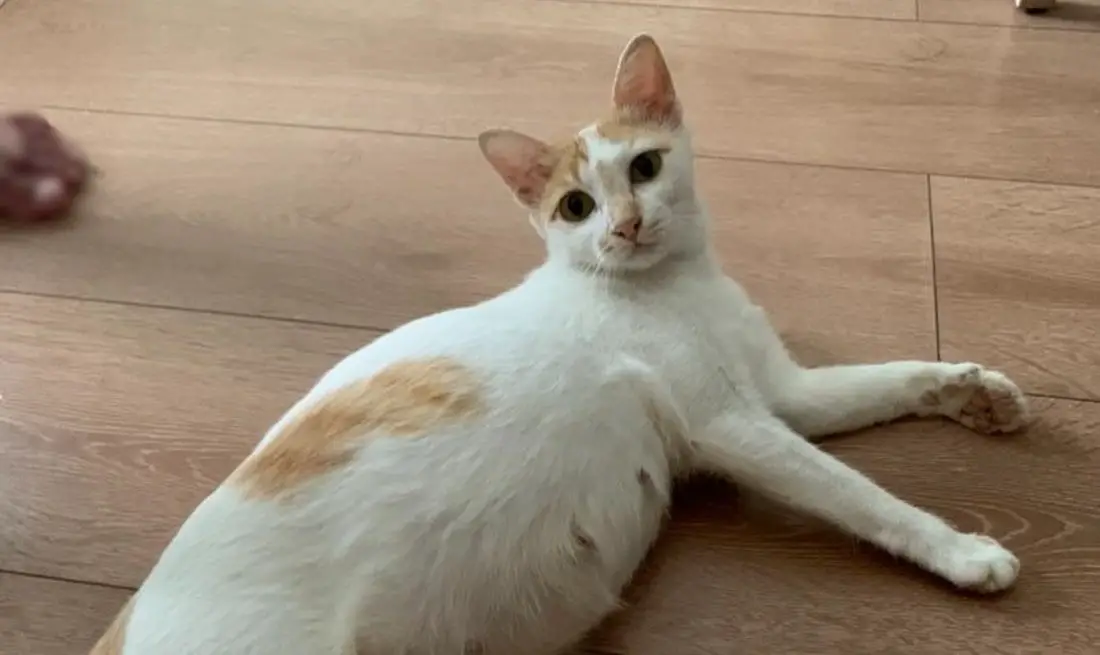
During a cat’s pregnancy, there will come a time when she goes into labor and starts giving birth to her precious kittens.
It is an exciting and crucial time for both the mother cat and her owner. Understanding the labor and delivery process is essential to ensure a smooth and safe birthing experience for the cat and her newborns.
Signs of Labor in a Pregnant Cat
When a pregnant cat is about to give birth, there are several signs to look out for. These signs include restlessness, nesting behavior, increased affection, loss of appetite, and vaginal discharge.
As the due date gets closer, the cat may also experience contractions and her belly may visibly tense up. It is important to monitor these signs closely to prepare for the upcoming birth.
Stages of Labor in Cats
Cat labor is divided into three stages: the first stage, the second stage, and the final stage. The first stage begins with uterine contractions that help prepare the birth canal for the delivery of the kittens.
The second stage involves the actual birth of the kittens, while the final stage focuses on the expulsion of the placenta.
First Stage of Labor
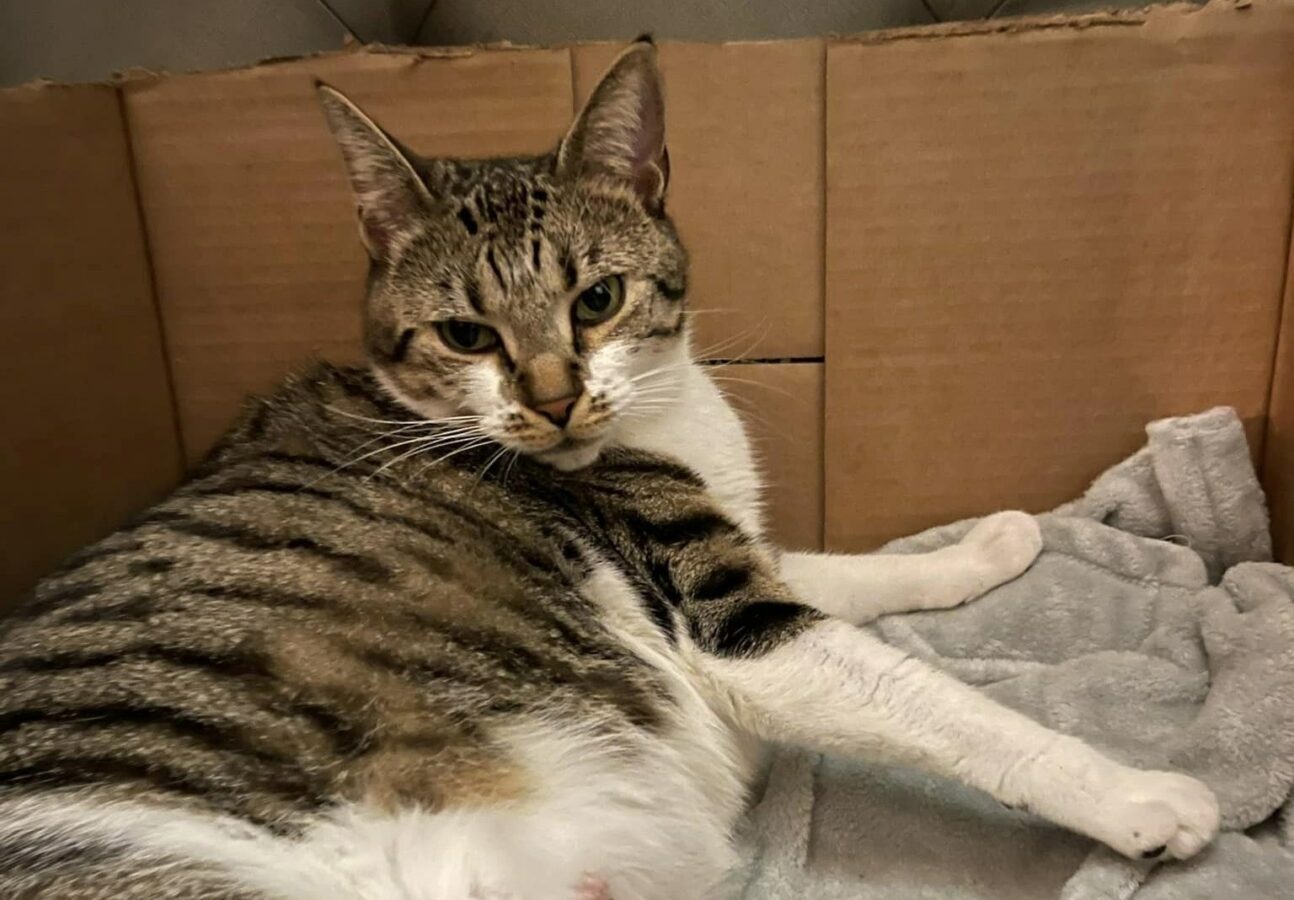
The first stage of labor involves the preparatory contractions of the uterus. These contractions help position the first kitten for birth and dilate the cervix.
It is during this stage that the cat’s amniotic sac may become visible and hang out of her vulva. This may seem alarming, but it is a normal part of the birthing process.
However, if the sac remains hanging out for an extended period of time, it could indicate a problem and veterinary assistance should be sought.
Second Stage of Labor
The second stage of labor is the active delivery stage where the kittens are born. During this stage, the cat will have intense contractions and push out each kitten, one at a time.
The first kitten is usually born within an hour after the onset of active labor, but subsequent kittens may take longer.
Common Birth Difficulties in Cats
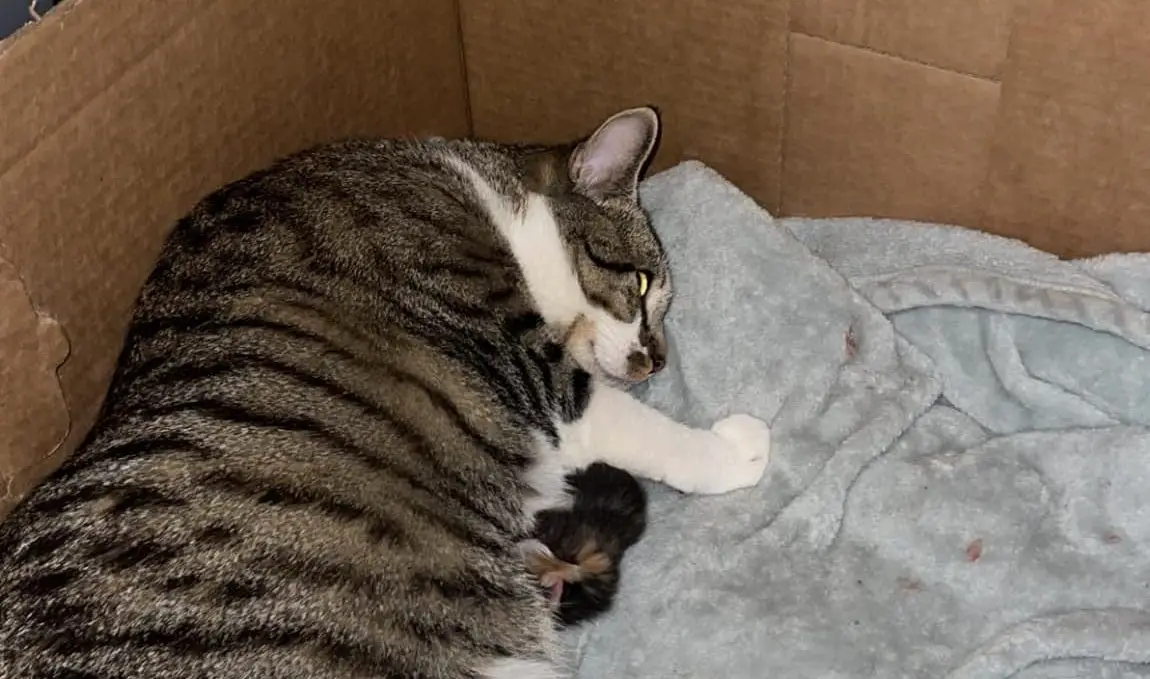
While the birthing process is usually smooth and without complications, there are instances where birth difficulties can occur.
It is important to be aware of these difficulties in order to provide necessary care and seek veterinary help when needed.
What are Cat Birth Difficulties?
Birth difficulties, also known as dystocia, refer to any complications that arise during the birthing process.
These difficulties can occur due to various reasons such as the size or position of the kittens, uterine inertia, or problems with the birth canal.
It is crucial to detect and address these difficulties promptly to ensure the well-being of the mother cat and her kittens.
Symptoms of Birth Difficulties in Cats
Symptoms of birth difficulties include prolonged or unproductive contractions, excessive straining without the birth of a kitten, green discharge, excessive bleeding, or signs of distress in the mother cat.
These signs indicate that there may be an obstruction or other complications that require immediate veterinary intervention.
What Causes Birth Difficulties in Cats
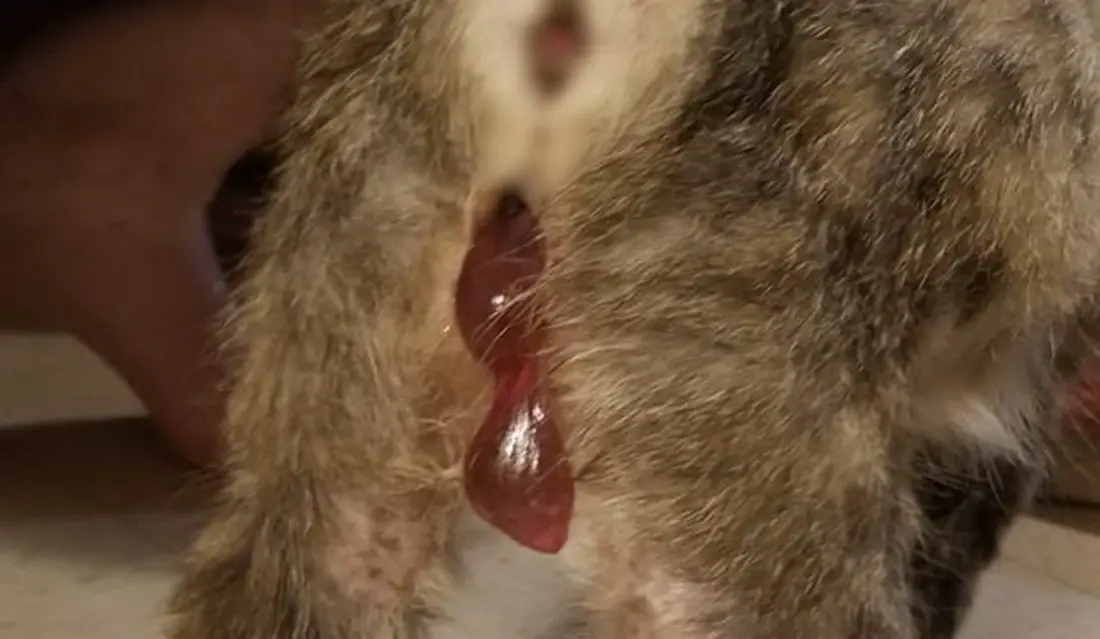
There are several factors that can contribute to birth difficulties in cats.
These include the presence of a large litter, small birth canal, abnormal positioning of the kittens, uterine abnormalities, or previous birthing difficulties in the cat.
Understanding the potential causes can help identify and address any issues that may arise during the birthing process.
Diagnosing Birth Difficulties in Cats
Diagnosing birth difficulties in cats requires the expertise of a veterinarian.
The vet will conduct a thorough examination of the mother cat, assessing her overall health and monitoring the progress of the birthing process.
Diagnostic tools such as ultrasounds or X-rays may be used to determine the size and positioning of the kittens, as well as any potential complications.
Can I Pull The Placenta Out Of A Cat?
Pulling the placenta out of a cat is strongly discouraged because it can cause severe harm to the cat, including potentially life-threatening complications.
Interfering with a cat’s birthing process by attempting to pull out the placenta can lead to serious issues such as tearing of the birth canal or retained placental tissue, which can cause infection and other complications.
Typically, the mother cat will expel the placenta naturally after each kitten is born, often eating it in the process. This is a normal part of the birthing process and provides the mother with much-needed nutrients.
If you observe that a placenta has not been expelled after each kitten’s birth, or if the mother cat seems distressed, it’s important to seek immediate veterinary attention.
A vet will have the necessary tools and expertise to safely handle the situation and ensure the health and well-being of both the mother cat and her kittens says The Spruce Pets.
Preparing for the Birth
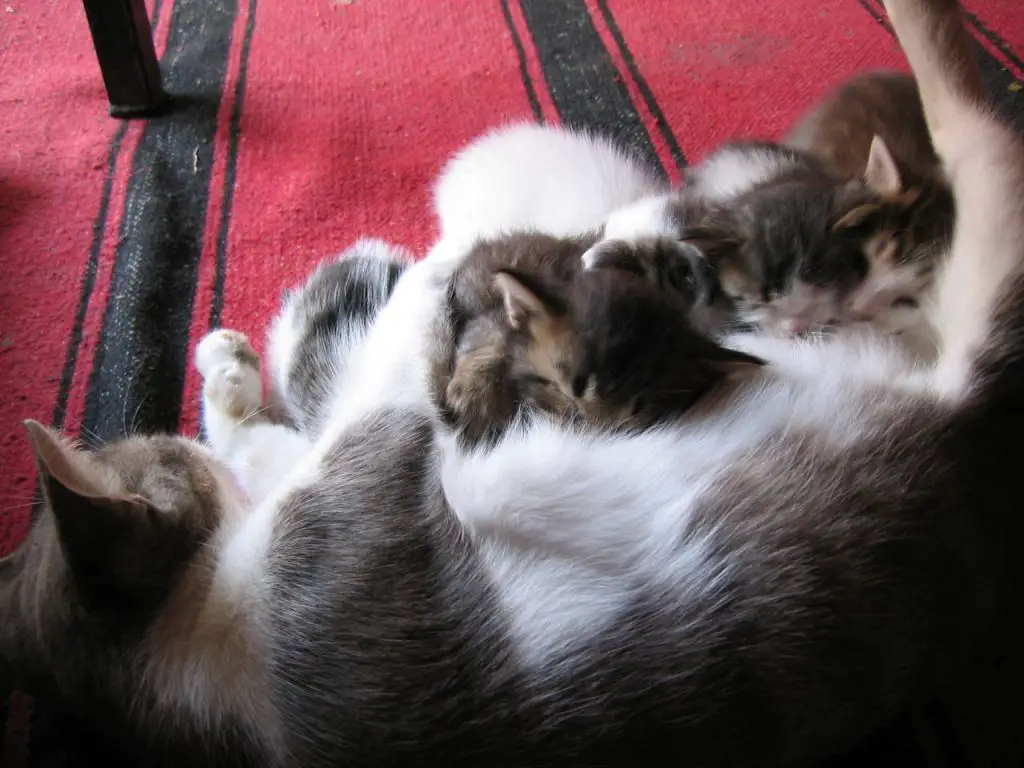
When your cat is about to give birth, it’s important to create a comfortable birthing area for her.
Find a quiet and secluded space where she can relax and feel safe. Line the area with soft, clean bedding, such as towels or blankets.
Make sure there are no sharp objects or hazards that could harm the mother or kittens.
Creating a calm and secure environment will help her feel more at ease during labor.
Gathering necessary supplies is also crucial for a smooth birthing process.
Some essential supplies include clean towels, sterilized scissors or clamps for cutting the umbilical cord, sterile gloves for handling the kittens, and a clean, warm box or nest for the mother and kittens to settle into after birth.
It’s also a good idea to have the contact information for your veterinarian readily available in case you need to call for assistance says VCAHospitals.
Helping Your Cat During Labor
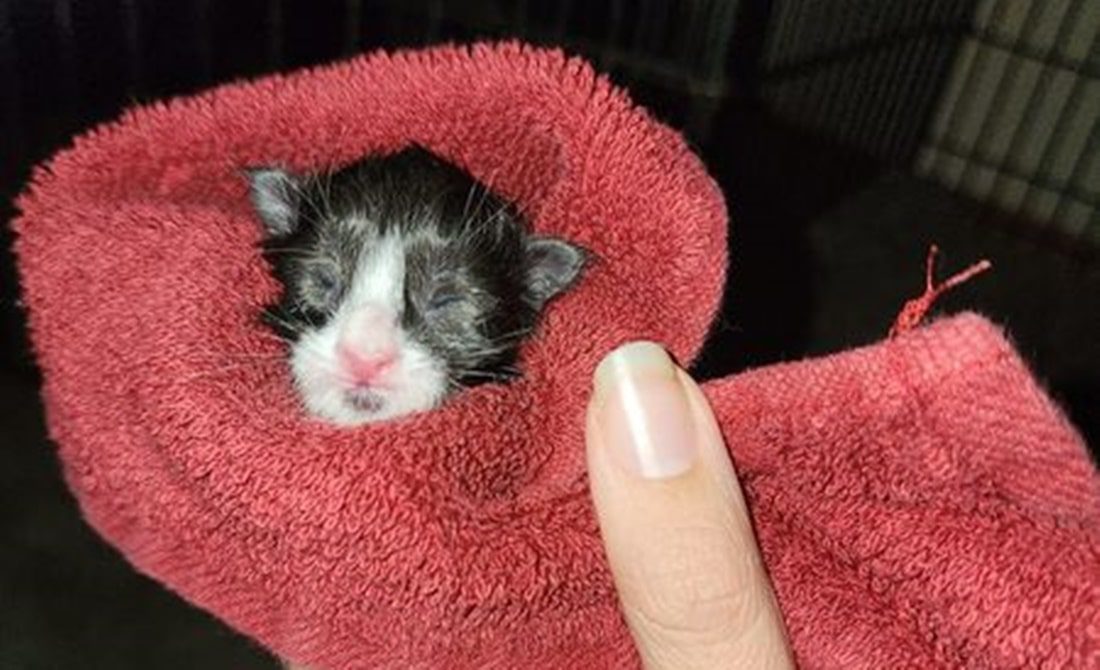
During labor, it’s important to provide your cat with support and comfort. Be there for her to offer reassurance and gentle encouragement.
Avoid overcrowding the birthing area or causing unnecessary stress. Allow her to choose her preferred birthing position, whether she prefers to stand, sit, or lie down.
As labor progresses, monitor the progress of the contractions and the birth of each kitten.
Keep track of the time between contractions and note any changes in behavior or signs of distress.
However, try to maintain a calm and quiet atmosphere to avoid interfering with the natural birthing process.
If you notice any abnormalities or complications, it’s essential to seek veterinary assistance immediately says Cats Org.
What Happens If A Kitten’s Umbilical Cord Doesn’t Fall Off?
If a kitten’s umbilical cord doesn’t fall off, it can become infected. The infection can cause the kitten to become ill and, in some cases, can be fatal. If you notice that your kitten’s umbilical cord hasn’t fallen off, contact your veterinarian immediately.
The average umbilical cord falls off within a week or two, but some may take longer. If your cat’s umbilical cord hasn’t fallen off after a couple of weeks, you should consult your veterinarian. In most cases, the umbilical cord will simply dry up and fall off on its own.
However, if it becomes infected, it will need to be removed by a professional. Infected umbilical cords can be very painful for cats and can lead to serious health problems if left untreated.
The umbilical cord is a tube-like structure that connects the fetus to the placenta. It consists of two arteries and a vein, which carry oxygenated blood and nutrients to the fetus and waste products away from it. The cord also contains a sticky substance called Wharton’s jelly, which helps to protect the blood vessels from damage.
The umbilical cord is typically about 18 inches long at birth but can vary in length depending on the size of the kitten. It is generally thicker in diameter than human umbilical cords, due to the fact that kittens are born with more body fat than human babies.
After birth, the cord quickly dries up and falls off within a few days. In some rare cases, the umbilical cord may not fall off and will need to be removed by a veterinarian as per PetMD.
Seeking Veterinary Assistance For Hanging Amniotic Sac In Cat
When it comes to your cat’s health and well-being during labor, it’s important to know when to contact a veterinarian.
While the birthing process is natural for cats, there are instances when medical intervention is necessary.
If you notice any signs of distress or complications such as prolonged labor, unproductive contractions, excessive bleeding, or green discharge, it is crucial to seek veterinary assistance immediately.
Remember, it’s always better to be safe than sorry when it comes to the health of your cat and her kittens says Purina.
What to Expect During a Veterinary Visit
During a veterinary visit for your cat in labor, the veterinarian will conduct a thorough examination to assess the health of both the mother cat and her kittens.
They may use diagnostic tools such as ultrasounds or X-rays to determine the size and positioning of the kittens, as well as any potential complications.
Based on their findings, the veterinarian will provide appropriate medical care, which may include assisting with the delivery, administering medications, or performing emergency procedures if needed.
It’s essential to follow the veterinarian’s instructions and advice to ensure the best outcome for your cat and her kittens says I Cat Care.
Aftercare for the Mother Cat and Kittens
Once the birthing process is complete, it’s essential to provide proper aftercare for the mother cat and her newborn kittens. This will help ensure their health and well-being during the crucial postpartum period.
Caring for the Mother Cat
The mother cat will need sufficient rest and nutrition after labor. Provide her with a quiet and comfortable space where she can relax and bond with her kittens.
Make sure she has access to fresh water and a balanced diet to support her recovery and milk production.
Monitor her closely for any signs of infection or complications, such as fever, swollen mammary glands, or discharge. If you notice any abnormalities, contact your veterinarian for guidance.
Caring for the Newborn Kittens
The newborn kittens are delicate and require special care during their early days of life. Ensure that they are nursing properly and gaining weight.
Monitor their body temperature, as they are unable to regulate it themselves in the first weeks. Keep their environment warm and draft-free.
If you notice any signs of weakness, inability to nurse, or atypical behavior, consult your veterinarian for advice says PDSA.
FAQs
Q: What should I do if my cat’s amniotic sac is hanging out during labor?
A: If your cat’s amniotic sac is hanging out during labor, it is important to seek veterinary assistance immediately. This could be a sign of a complication and requires professional medical attention.
Q: What are the signs of a cat going into labor?
A: Some common signs that a cat is going into labor include restlessness, nesting behavior, loss of appetite, vocalization, and an increase in body temperature.
Q: How long does it take for a cat to give birth after the amniotic sac appears?
A: The appearance of the amniotic sac is just one stage of the labor process. The length of time it takes for a cat to give birth can vary, but on average, it can take anywhere from a few minutes to a few hours after the amniotic sac appears.
Q: Can I help my cat deliver the kittens if the amniotic sac is stuck?
A: It is best to let a veterinarian handle any complications during the birthing process, including a stuck amniotic sac. They have the proper tools and knowledge to safely assist in the delivery.
Q: How can I prevent complications with the amniotic sac during my cat’s pregnancy?
A: Ensuring that your cat receives regular prenatal care and maintaining a healthy diet can help reduce the risk of complications with the amniotic sac during pregnancy.
Q: Is it normal for the amniotic sac to be visible during labor?
A: It is not uncommon for the amniotic sac to become visible during labor. However, if it appears to be hanging out or doesn’t break naturally, it could indicate a problem and should be addressed by a veterinarian.
Q: What happens if the amniotic sac doesn’t break on its own?
A: If the amniotic sac doesn’t break on its own, a veterinarian may need to intervene and assist in breaking it to allow the kitten to breathe properly.
Q: Should I try to remove the amniotic sac if it is hanging out?
A: No, it is not recommended to try and remove the amniotic sac if it is hanging out. Instead, seek immediate veterinary assistance as it could be a sign of a complication.
Q: Can complications with the amniotic sac be life-threatening for the kittens?
A: Yes, complications with the amniotic sac can be life-threatening for the kittens. If the amniotic sac is not properly broken or the kittens are not breathing properly after birth, it is important to seek veterinary attention immediately.
Conclusion and final thoughts
In conclusion, it is important to remain calm and focused if you ever find your cat’s amniotic sac hanging out during labor.
It may seem like a daunting and alarming situation, but remember that as long as your cat is not in distress, the birthing process will most likely continue normally with minimal intervention needed.

